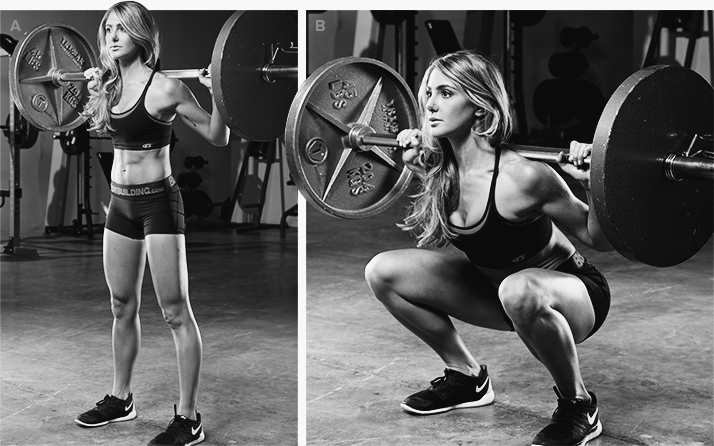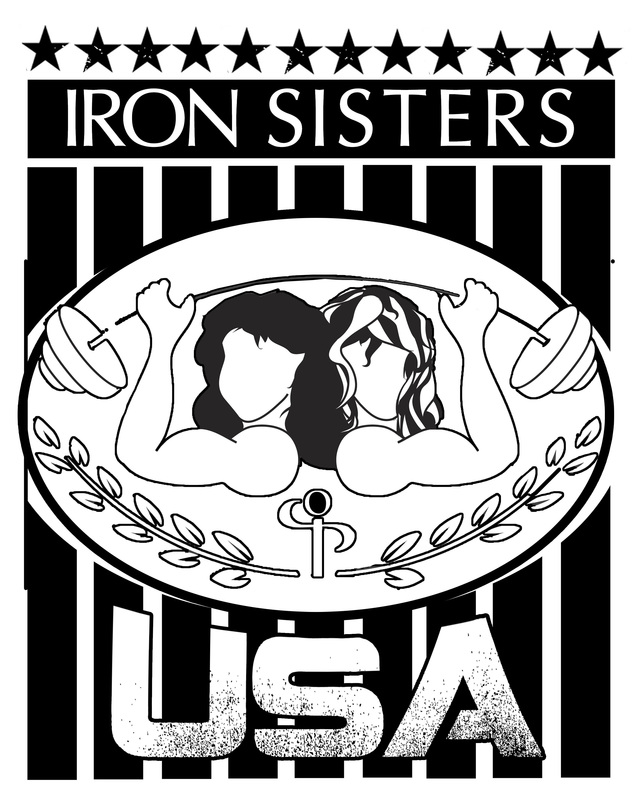The Mechanics of a Beautiful Lift
Squats

There are many different factors that contribute to a beautiful squat. Starting from the head down the first thing to consider is a neutral head and spine position. Keeping your spine and head neutral is a key factor for avoiding injury because it helps you avoid applying weight to your frame in an unnatural way. The next thing you want to if find a comfortable position for you to place the bar. There are two popular positions: high-bar and low-bar. High bar rests higher up on your back, towards your shoulders, and low-bar rests on your trapezius muscles, which you push together with your hand positioning, in order to create a “shelf”. Now that your standing positioning has been established, we need to look at your descent into a full squat. First are foremost, you want to take a deep breath and fill your belly with air, in order to brace your core. Once again, this helps to maintain proper form, thus avoiding injury. Your feet should be positioned in a way that feels comfortable for you. Start by taking a stance that is a two inches or so wider than your shoulder width on either side, and turn the toes of your feet out. The best way to know if you are in the correct stance is to do the actual lift, and see if you are standing wide enough to avoid your hips. On your way down, you want to make sure everything is tight. Once you’ve hit depth, which is when your quadriceps and hamstrings are at least parallel with the ground, you want to reverse the momentum and spring back up to a standing position. This action tends to come from practice, so don’t feel bad if it takes awhile to dial in your squat!
Bench Press

As you can see from the photo above, some athletes choose to arch their backs while bench pressing. The reason for this is because this positioning optimizes your strength and makes sure you are engaging the right muscles properly. The muscle groups you really ant to focus on in this lift is your pectoral muscles and your Latissimi dorsis, or “lats”. By engaging these muscles groups, you avoid injury and are targeting the muscles that will help you achieve a heavier lift. Similar to the squat, you want to try to push your trapezius muscles together while lying on the bench, while focusing on locking your lats down and in to your body. Next, pull your feet back as far as you can, while still placing them on the ground, like the athlete above. In order to do this, make sure your glutes as well as your quads are engaged. You will need those to help your drive the weight back up. Once you or your spotter unracks the weight, take a deep breath, and inflate your belly with air the same way you did in squats. While keeping everything tight and engaged, begin a controlled descent of the bar to your chest. You’re aiming to his right at the bottom of your bosom, depending on your grip placement. Once you’ve made contact with your body, while still engaging all of the aforementioned muscle groups, think about pressing your feet into the ground while driving your quads back towards your body. This will help drive momentum for the lift. Lastly, rerack the weight and give yourself a high five because you’ve completed a bench press.
Conventional Deadlift

There are two ways to complete a deadlift: conventional and sumo. For the purposes of this website, we won’t go too much into how to pick which one is right for you because choosing which one is best for you has a lot to do with the way your body is naturally built, as well as which of your muscles are stronger than others. To figure out which is best for you, please consult an educated trainer or coach. At any rate, let’s take a look at a the conventional deadlift. The first thing you want to do is take a stance that is about 3 inches from the bar, with your feet shoulders width apart. Next, you want to get into position. The first thing I like to do is establish my grip on the bar. I lift switch grip because I feel it is more forgiving on your hands and a more secure grip, but everyone has their own preferences. Once again, to figure out which grip works best for you, please consult an educated trainer or coach. Each one of your hands should be on the outside of your legs, which is a key difference from sumo. Next, you want to squat down to the point where your hamstrings are fully engaged, your spine and head are neutral, and you begin to feel it in your glutes. Next, keeping the bar as close to your shins as possible, stand upright, engaging your quads, glutes, and entire posterior chain. In order to complete the lift, you must be standing fully upright. Make sure your spine stays neutral the entire time. You are very likely to hurt yourself if your round your back (like an angry cat). And that’s how you conventional deadlift!
Sumo Deadlift

The second deadlifting positioning is sumo. As you can see from the athlete above, the biggest difference between the two types of deadlifts, in regards to positioning, is your stance and hand placement. In sumo deadlifting, you take a wide stance and your grip placement is between your legs. Once again, it is up to you to decide what grip positioning works best for you. When setting up your feet positioning, you want to make sure that your stance is wide enough that you are able to fully engage your quads. Make sure your feet are turned out so that you don’t bump your knees when you pull. Similar to conventional deadlifts, you want to make sure your spine and head is neutral throughout the lift. A good way to cue that positioning is to think about locking your lats in. When you pull, you want to make sure the bar is as close to the insides of your shins as possible in order to maintain stability while pulling. The lift is complete when you bring your hips through where your arms are positioned.
Competing
Tips for your first competition
There are many different factors that contribute to having a successful meet day. Everyone’s competition prep and meet day experience will be different, but here are some high level tips that I learned.
One of the most important things you can do is learn the lifting cues. It’s not enough to just step on the platform and lift the weight, you have to do so with proper form, and with the proper pauses. I highly encourage anyone who is competing to look into the cues the judges implement on meet day, and incorporate them into your training leading up to the competition.
Another thing to consider is your weight class. I highly recommend not cutting weight for your first competition. It can be tempting to do so, however remembering all of the cues in addition to trying to hit lifts you likely have not hit before is hard enough. Don’t make the day harder for yourself by cutting weight for your first competition.
The last thing I like to remind new competitors about is to simply make this day your own. It is so important to remember that you are not competing against anyone but yourself. Don’t worry about other people’s numbers that day. Focus on you and the exciting prospect of completing your first competition! If you make sure this day is a fun learning experience for you, you will get the most out of your first meet experience.





